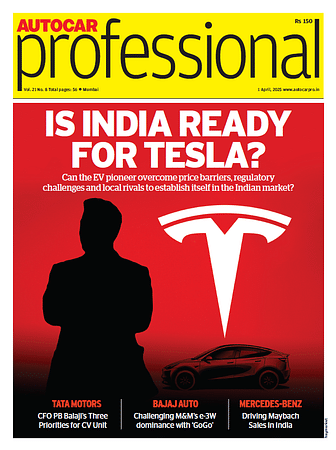Opinion: The big Triumphs are facing new challenges
The entire expansion drive is focused on the locally manufactured 400s.
Triumph has had a great run in India since its first bikes went on sale here in 2013. Few others have been able to match its spread of machines, which have included pretty retros, modern roadsters, supersports, big ADVs and even a few giant cruisers.
But there was much more to Triumph’s success than just choice. The brand also found its strong following for offering that premium, Euro-bike experience but at a tangibly lower price than the Italian and German rivals. A good reputation for reliability also helped, and Triumph found itself in a sweet spot where there were very few sporty and exciting big bike options priced below its offerings.
The Tiger 800/900 is a great example, with the affordable alternatives being the 650 twins from Japan, which were a big step down in every way. But the times have changed, and a few developments in the past year or so have made things more challenging for the British brand’s big-bike line-up.
The first is that the Japanese have closed the gap in a rather clever way. Both the Honda Transalp and the Suzuki V-Strom 800DE are still slower, simpler bikes than the Triumph Tiger 900, but the difference is now a lot smaller. These are both large, fast, capable and desirable bikes, and they happen to cost a good deal less money. Their appeal continues in the inherent expected qualities of a Japanese motorcycle: solid engineering, reliability and relatively low running costs. That last point has now become very significant.
When Bajaj took over Triumph’s operations in India last year, we hoped it would mean good things, particularly for the after-sales experience. Unfortunately, the opposite seems to have happened, with the costs of service and spare parts going up by 20-30 percent. Triumph’s service costs were always higher than those of its Japanese rivals, but I worry that the gap is now big enough to be a dealbreaker for some buyers.
Don’t get me wrong, the Triumph dealer network is expanding rapidly and has grown multi-fold in the last year alone. However, the entire expansion drive is focused on the locally manufactured 400s. Of course, I fully understand that this is where the bulk of the huge business opportunity lies, but there’s a growing feeling that the big bikes are being pushed to the sidelines in this process.
I’ll leave it with this. There’s no doubt that the big-bike business in India remains relatively minuscule and that it is not a huge money-generating operation. However, the very reason that the new Bajaj-built Triumph 400s are so appealing is that they offer that uber-desirable design and brand identity at a much more affordable price for the masses. And that’s why it would be a mistake not to continue nurturing the big bike business. After all, it was these very bikes that created the desirability in the first place.
RELATED ARTICLES
Tunwal E-Motors Partners With Bajaj Finance for Customer Loans
The strategic collaboration enables customers to access financing solutions at Tunwal dealerships nationwide, potentiall...
Sundaram Finance Holdings to Acquire 24.16% Stake in Axles India for ₹182.68 Crore
The automotive components investment firm will increase its ownership to nearly 63% in the axle housing manufacturer, ma...
Mercedes Benz Clocks Record FY25 Sales, Led By Top-End Models, EVs
The German luxury carmaker’s sales of battery electric vehicles surged 51% and those of top-end luxury vehicles grew by ...






 29 Sep 2024
29 Sep 2024
 2279 Views
2279 Views





 Angitha Suresh
Angitha Suresh



 Darshan Nakhwa
Darshan Nakhwa

